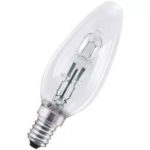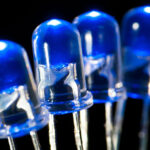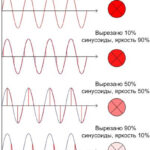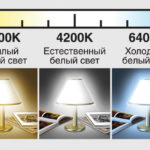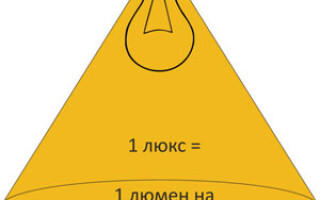Lumen is a unit of measure for the brightness of radiation. It is a light quantity in the international system of units. Lumen characterizes the amount of light emitted by a source. It is a more accurate value than power, since light sources with the same power, but different efficiency and spectral characteristics, emit an unequal light flux.
Content
What is a lumen?
There are several units for measuring illumination. The main values are lux and lumens. Their difference is that luxury indicates the illuminance of a unit surface area, and lumens is a unit of measurement of the total radiation flux of a light source. Thus, the higher the lux value, the brighter the surface is illuminated, and the more lumens, the brighter the lamp itself.This difference helps to evaluate the effectiveness of lighting devices of various designs.
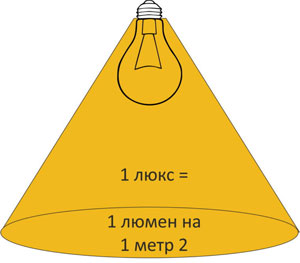
It is necessary to consider what lumens are in LED lamps. This will help to understand the fact that such light sources are characterized by directional radiation. Incandescent lamps and fluorescent emit light in all directions. To obtain the same illumination of the surface, LED elements of lower brightness are needed, since the radiation is concentrated in one direction.
Incandescent lamps and economical ones give non-directional radiation, which requires the use of reflectors (reflectors), redirecting the flow of light in the required direction. When using LED devices, there is no need for reflectors.
Parameters that determine the luminous flux and its calculation
Lighting parameters are affected not only by the level of brightness of light sources. It should be taken into account:
- The wavelength of the emitted light. Lighting with a color temperature of 4200 K, which corresponds to natural white, is better perceived by the eye than those closer to the red or blue part of the spectrum.
- Direction of light propagation. Highly directional lighting fixtures allow you to concentrate the emission of light in the right place without installing brighter fixtures.
The luminous flux in lumens is rarely indicated by manufacturers, since most buyers are guided by the power of lamps and their color temperature.
How many lumens in 1 watt LED light bulb
Manufacturers of lighting equipment do not always put a complete list of characteristics on the product packaging. This could be for several reasons:
- the habit of buyers to evaluate the brightness of light bulbs by power consumption;
- unscrupulous manufacturers do not bother to carry out the necessary measurements.
The problem is that the level of radiation of LEDs and structures made on their basis is unequal:
- part of the flow is delayed by a protective flask;
- there are several LEDs in the LED lamp;
- part of the power is dissipated in the LED driver;
- The brightness depends on the amount of current through the LED.
An accurate determination is possible only with the help of measuring instruments (luxmeters), but for some types of LEDs it will be possible to give approximate data:
- LEDs in a frosted bulb - 80-90 Lm / W;
- LEDs in a transparent flask - 100-110 Lm / W;
- single LEDs - up to 150 Lm / W;
- experimental models - 220 Lm/W.
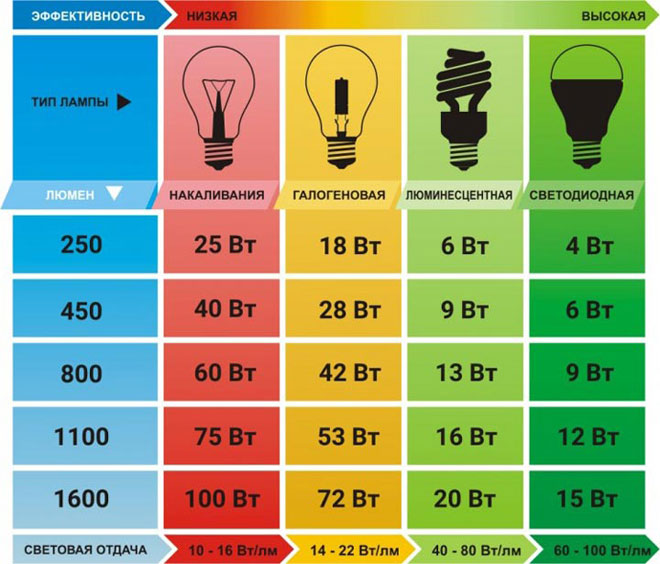
The listed data can be used to determine the current consumption when using LED devices for which a brightness value is defined. If an LED spotlight with a transparent protective glass is installed and its brightness parameter is declared as 3000 lumens, then the power consumption will be 30 watts. Knowing the power and supply voltage, it is easy to determine the current consumption.
Convert Lumens to Watts
To compare the efficiency of light sources of various types and designs, it is convenient to have a table in front of you, which contains data on the power of lighting fixtures with the same brightness values.
| Illumination, Lumen/square meter | LED lamp, W | Energy-saving (fluorescent lamp), W | Incandescent lamp, W |
| 250 | ~ 2 | ~ 5 | 20 |
| 400 | ~ 4 | ~ 10 | 40 |
| 700 | ~ 8 | ~ 15 | 60 |
| 900 | ~ 10 | ~ 18 | 75 |
| 1200 | ~ 12 | ~ 25 | 100 |
| 1800 | ~ 18 | ~ 40 | 150 |
| 2500 | ~ 25 | ~ 60 | 200 |
The norm of illumination of a residential area
The illumination of rooms for different purposes is not the same and can vary by an order of magnitude. The number of lumens per square meter by type of residential premises is as follows:
- office, library, workshop - 300;
- children's room - 200;
- kitchen, bedroom - 150;
- bath, sauna, swimming pool - 100;
- wardrobe, corridor - 75;
- hall, corridor, bathroom, bathroom - 50;
- stairs, basement, attic - 20.
Calculation of illumination for rooms
To determine the illumination of a room, you need to know the following parameters:
- E - standard value of illumination (how many lumens do you need for 1 m²).
- S is the area of the room.
- k is the height factor:
- k = 1 with a ceiling height of 2.5 - 2.7 m;
- k = 1.2 with a ceiling height of 2.7 - 3.0 m;
- k = 1.5 with a ceiling height of 3.0 - 3.5 m;
- k = 2 with a ceiling height of 3.5 - 4.5 m;
The formula for calculating is simple:
Ф = E•S•k.
Knowing the illumination, it is possible to select the required luminous flux and power of lighting lamps, taking into account their differences in production technologies and the principle of operation. Consideration should be given to the peculiarity of a person's vision, for which light sources with a bluish tinge (starting from color temperature 4700K and above) appear less bright.
Comparative characteristics of incandescent lamps and LED lamps
Above was a table that compared the power of different types of devices for the same brightness value. The table shows how many lumens are in an incandescent lamp, in fluorescent and LED lamps.
The efficiency of the devices varies by more than an order of magnitude. It is immediately clear that the comparison is in favor of modern light sources. And this is even without taking into account the great durability of LED lighting sources.According to some manufacturers, LED-elements can last for tens of thousands of hours. Saving electricity over the service life many times pays for the high cost of LED light sources.
100 W incandescent lamps are the most suitable for lighting domestic premises. Unsatisfactory efficiency, low service life have led to the fact that light sources with an incandescent filament are being replaced by more modern, efficient and durable devices. A 12W LED lamp gives a stream of light of the same brightness as the lumens of a 100W incandescent lamp.
Similar articles:


